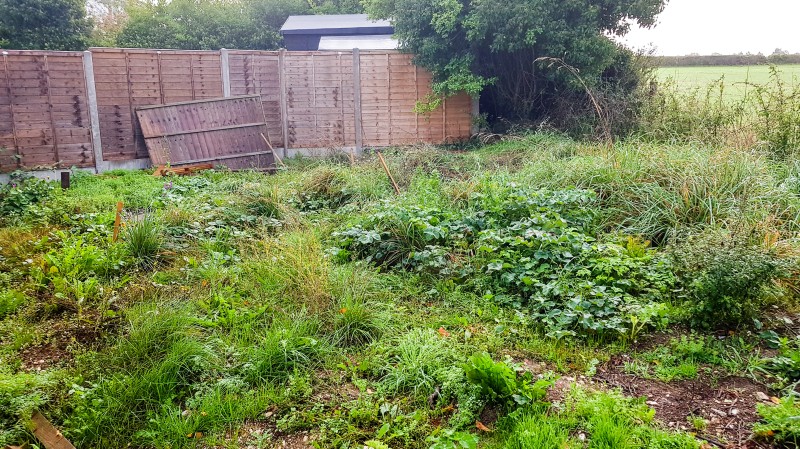You are here: How to find your self-build plot
It’s the first step to any self-build journey. Here’s how to find the perfect plot
Finding the perfect plot of land to build your dream home isn’t easy. It will require lots of hard work plus a bit of luck. Typically, that plot is more likely to found on the site of an old bungalow or infill garden plot than in a green field.
“It is usually more acceptable in planning policy terms to build on a brownfield site,” says architect Scot Masker, founder of Masker Architects. “Your starting point is always planning policy which will set out the opportunities and restrictions for any potential plot. But from that point your architect or designer should unlock the possibilities of the plot and realise your aspirations with a really good design.”
An estimated 20,000 people go down the self-build route each year. Most employ architects and builders rather than do the hand-on work themselves.

Study maps – and think like a developer
Search for potential plots using Google Maps. Look for houses with large, neglected gardens that could be subdivided, particularly those with road access, small bungalows on large plots of land ripe for redevelopment and big gaps between and behind houses. It may take a bit of imagination but a former scrap yard, bus depot or derelict barn could make a beautiful home. Google Maps save on wasted trips by showing street level photos and aerial views. It’s worth also buying a printed map that shows houses to search for potential plots, for instance OS Pathfinders at 1:25,000. Find out the owners by asking locally or visiting the Land Registry (gov.uk/land-registry).
Sign up to specialist search engines
Plotsearch on www.buildstore.co.uk is free to subscribe to, allowing you to access more than 5,000 plots, conversion and renovation opportunities. The search engine saves time by only listing building plots where planning permission has been granted. The company compiles its database by contacting estate agents, private vendors, local authorities, the Ministry of Defence and more. The website of Self-build and Design magazine www.selfbuildanddesign.com also offers its own free PlotBrowser facility, listing thousands of self-build plots in the UK. You can search by county and plot type, including replacement build, modernisation, extension and renovation. Plotfinder.net from Homebuilding and Renovation magazine costs £5 per month to access the full details of more than 17,000 plots and renovation opportunities.
General property websites, such as Rightmove, also list building plots for sale.
Go to local auctions
At auction you could pick up a bargain – everything from a green plot to a rundown bungalow for a demolition and rebuild. Find out the key auction houses in your area and get on their lists for catalogues. Well-known agents include Clive Emson, Town and Country, Savills and Cooper and Tanner. Land listed as a ‘building plot’ should have outline or detailed planning permission. Check it hasn’t expired with the local planning authority, don’t rely on the catalogue information.
A 10% deposit is usually required at the fall of the hammer with the remainder payable within the month. Make sure to get independent expert advice before making a bid on a property. A qualified land surveyor will check services, overhead powerlines, public or other rights of way, covenants that restrict land use, flood risk and more. When choosing a surveyor, ideally look for those who are members of the Royal Institution for Chartered Surveyors (RICS).
Study the local plan
Council planning departments are legally required to prepare maps and plans of their areas earmarking locations suitable for new housing. This planning document is known as the local plan and can be viewed online or in the reception area of the planning department. It’s a useful blueprint. If you identify a potential building plot and it’s within the development boundaries there is nothing to stop you applying for planning permission even if you don’t own the land. If you go down this route, make sure you have an agreement in place with the property owner to purchase the land for an agreed sum if permission is granted as its value will increase significantly.
New plots tend to be within those development boundaries and are often snapped up by developers. The plots that remain are usually brownfield sites – meaning land that has been previously developed and it’s here that most opportunities are found. That said, competition is still fierce in popular areas.
Check your local authority’s website
Government regulations require councils to publish a brownfield land register online. Simply put the name of a council and “brownfield land register” into your search engine. The registers are split into two parts - part one is a list of all brownfield sites while part two is a list of only those sites that have been granted ‘permission in principle.’ To be included on the register, sites much be 0.25 hectares in size and large enough for five or more dwellings. So, the register is most useful for groups of self-builders and those interested in larger sites.
Check recent planning applications on the council website in your target area, too. Sometimes property owners are looking to sell a site rather than build themselves. Their details are often included on the application and there is nothing to stop you contacting them directly to ask if they are willing to sell. Remember to sign up to a council’s Right to Build register in your target area.
Use self-build companies
There are a few specialist developers, for example Potton, who buy up land and split it up into smaller plots with services (electricity, water and drainage) to sell on to self-builders. This takes a lot of the hard work and risk out of the process for self-builders as the developer finds suitable sites and obtain planning permission. For example, Graven Hill in Bicester is the UK’s biggest self-build and custom-build scheme with permission for 1,900 homes. Most self-build sites are smaller around 10 to 20 homes. Check the small print. Will you be tied into using a specialist company if you buy a plot or can you hire your own architect and builder?
Focus on your key areas
Narrow down your search to two or three key areas. Walk around your chosen areas to get to know it at suburb and street level. Deliver letters asking the owners of potential plots if they are interested in selling to you. Register with local estate agents and describe the type of building opportunity you are looking for whether it’s a derelict bungalow or an infill garden plot. Local agents who run property auctions are most likely to have something of interest on their listings and be willing to help. Tell people you are searching for a plot. Consider posting ads in village shops or social media sites.
There’s no guarantee of success when searching for land to build your dream home. But many self-builders do manage to find their perfect plot albeit after a long and comprehensive search.
If you are looking to make some home improvements, you may find some of these services useful
Building Regulations
Find details of local experts who can help with Building Regulations
Builders
Find local help with a building project
Architectural Design Services
Find local Architectural Design experts
Structural Inspections
Find an expert to carry out a structural inspection
Building Surveys
I want a local surveyor to do a Building Survey for me
Choose which Architectural service you require
If you are not sure which service you require, check out the options available...


